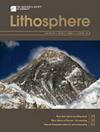Volcanic Age and Geochemistry of the Permian Linxi Formation in Northeast China: Implications for the Tectonic Evolution of the Paleo-Asian Ocean
IF 1.7
4区 地球科学
Q3 GEOCHEMISTRY & GEOPHYSICS
引用次数: 0
Abstract
Abstract The tectonic evolution of the Paleo-Asian Ocean (PAO) has been well studied, including its gradual narrowing and closure by subduction. However, aspects of the tectonic evolution of the oceanic domain remain unclear, including the exact timing and nature of the closure. The Central Asian Orogenic Belt (CAOB) was formed by the closure of the PAO and, therefore, contains information about the tectonic evolution of the oceanic domain. Here, we report a study of the petrology, geochronology, and geochemistry of the Taohaiyingzi section of the Permian Linxi Formation in Alukhorqin Banner (Northeast China) in the central part of the CAOB. A newly discovered andesitic tuff from the lower part of the Linxi Formation yields a weighted mean 206Pb/238U age of 262.2 ± 1.1 Ma (n = 87), indicating that the lower part of the Linxi Formation of the Taohaiyingzi section was deposited during the late Guadalupian. Provenance weathering indicators show that the sedimentary rocks of the Linxi Formation are of low maturity. Element geochemical characteristics indicate that the Linxi Formation clastic rocks were derived from eroded magmatic rocks that formed in a continental arc setting and were deposited close to the arc in a continental arc basin environment. The active margin setting was generated by the subduction of the paleo-Asian oceanic plate beneath the Xilinhot–Songliao block. The inferred palaeosalinity of the sedimentary environment changed gradually from brackish to fresh water, suggesting the end of oceanic plate subduction during the late Guadalupian, and the closure of the PAO during or after the Lopingian.中国东北二叠系林西组火山时代和地球化学:对古亚洲海洋构造演化的启示
摘要古亚洲洋(PAO)的构造演化已被广泛研究,包括其逐渐变窄和俯冲闭合。然而,大洋域的构造演化方面仍然不清楚,包括确切的时间和关闭的性质。中亚造山带(CAOB)是由中亚造山带的闭合而形成的,因此它包含了洋域构造演化的信息。本文对中国东北阿鲁科尔沁中部二叠系林西组桃海营子剖面进行了岩石学、年代学和地球化学研究。新发现的临西组下段安山岩凝灰岩的加权平均206Pb/238U年龄为262.2±1.1 Ma (n = 87),表明桃海营子剖面临西组下段沉积于瓜达鲁普期晚期。物源风化指标表明,林西组沉积岩成熟度较低。元素地球化学特征表明,林西组碎屑岩来源于大陆弧环境下的侵蚀岩浆岩,并在大陆弧盆地环境下沉积于弧附近。活动边缘环境是由古亚洲大洋板块在锡林浩特—松辽地块下的俯冲作用形成的。推断沉积环境的古盐度由咸淡水逐渐变为淡水,表明瓜达鲁普期晚期洋板俯冲结束,洛平期或之后PAO闭合。
本文章由计算机程序翻译,如有差异,请以英文原文为准。
求助全文
约1分钟内获得全文
求助全文
来源期刊

Lithosphere
GEOCHEMISTRY & GEOPHYSICS-GEOLOGY
CiteScore
3.80
自引率
16.70%
发文量
284
审稿时长
>12 weeks
期刊介绍:
The open access journal will have an expanded scope covering research in all areas of earth, planetary, and environmental sciences, providing a unique publishing choice for authors in the geoscience community.
 求助内容:
求助内容: 应助结果提醒方式:
应助结果提醒方式:


